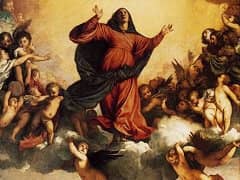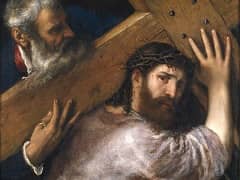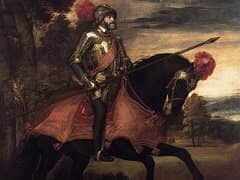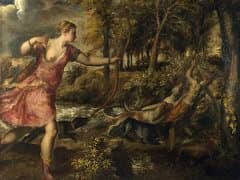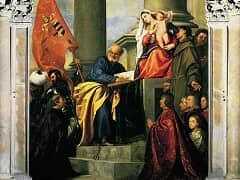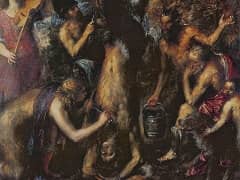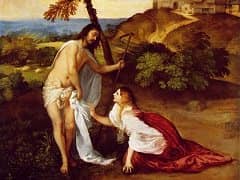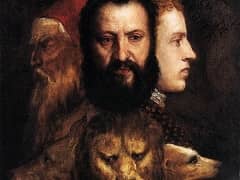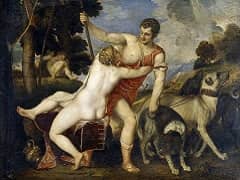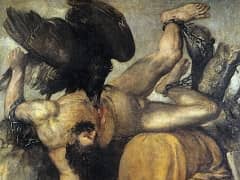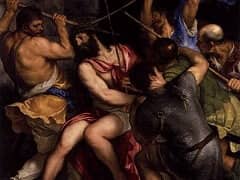Bacchus and Ariadne by Titian
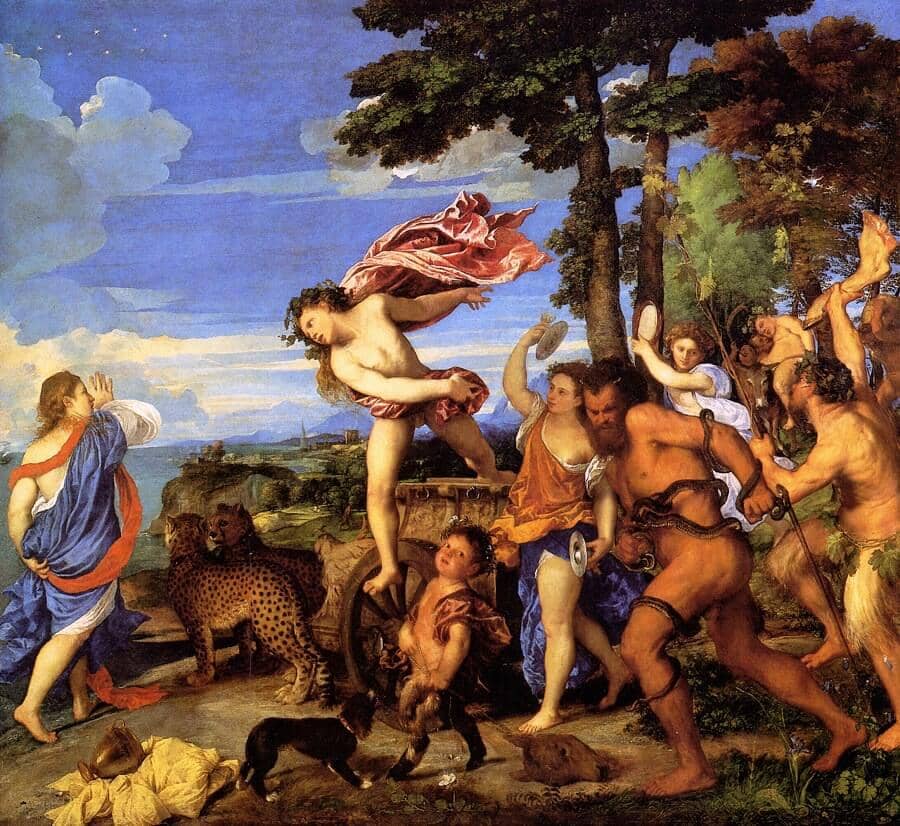
Bacchus and Ariadne was commissioned by Alfonso d'Este, Duke of Ferrara, as part of a decorative scheme for a small room, the Camerino d'Alabastro (alabaster chamber), in the ducal
palace. Alfonso's plan was for works by the best artists in Italy to hang together there, to recreate an ancient picture gallery, as described in a lateantique Greek text. Two of the
commissioned artists, Raphael and Fra Bartolommeo, died before completing their works, and Titian ended up painting three pictures (the other two are in the Prado, in Madrid).
Bacchus and Ariadne illustrates mythological texts by the Latin poets Catullus and Ovid, which Titian would have been required to read. They refer to the story of Princess Ariadne,
who, in love with the hero Theseus, helped him to kill the Minotaur at the palace of Knossos on the island of Crete. Theseus then abandoned her while she slept, on the Greek island of Naxos.
Distraught, Ariadne was wandering along the shore searching for sight of her lover's ship, when she was surprised by the wine god Bacchus. He had fallen in love with her and asked her to
marry him, offering her the sky as a wedding gift, in which one day she would become a constellation.
Titian chooses to depict a significant and dramatic moment in the story. Bacchus falls in love with Ariadne at first sight, but Ariadne is still lamenting her fate. She is startled by
Bacchus' noisy group of followers and looks up at him with a mixture of shock and fear, but also perhaps of interest. However, Titian also refers to the past, with the ship on the horizon
reminding us that Ariadne has been abandoned by Theseus. The end of the story is present too, in the form of the promised crown of stars above Ariadne's head. Most of the detail comes
straight from the text: Bacchus and his group are described by Catullus as 'youthful Bacchus wandering with the rout of satyrs and the sileni, children of Nyssa, looking for you Ariadne...
some waving thyrsi....some tossing about the limbs of a mangled steer, some girding themselves with mangled serpents...others beating timbrels with raised hands or clashing with round brass
cymbals'. Ovid describes Ariadne as 'clad in an ungirt tunic, barefoot, golden hair unbound as if she had just risen from sleep, calling for Theseus across the deep water, her cheeks
bedewed with tears'. Titian also adds his own elements, all in the foreground: lying on a prominent lemon yellow cloth is a bronze vase with the artist's signature engraved on to it.
A small dog with a collar (so perhaps belonging to the 'human', rather than the godly side of the picture) barks at a little satyr child who drags a calf's head behind him. The flower in front
of him is a caper flower which was a symbol of love. The two cheetahs pulling the chariot may also be personal references. Bacchus' chariot is normally drawn by tigers or panthers, but Alfonso
d'Este is known to have had a menagerie at the palace in which he kept a cheetah or a cheetah-like member of the cat family.

